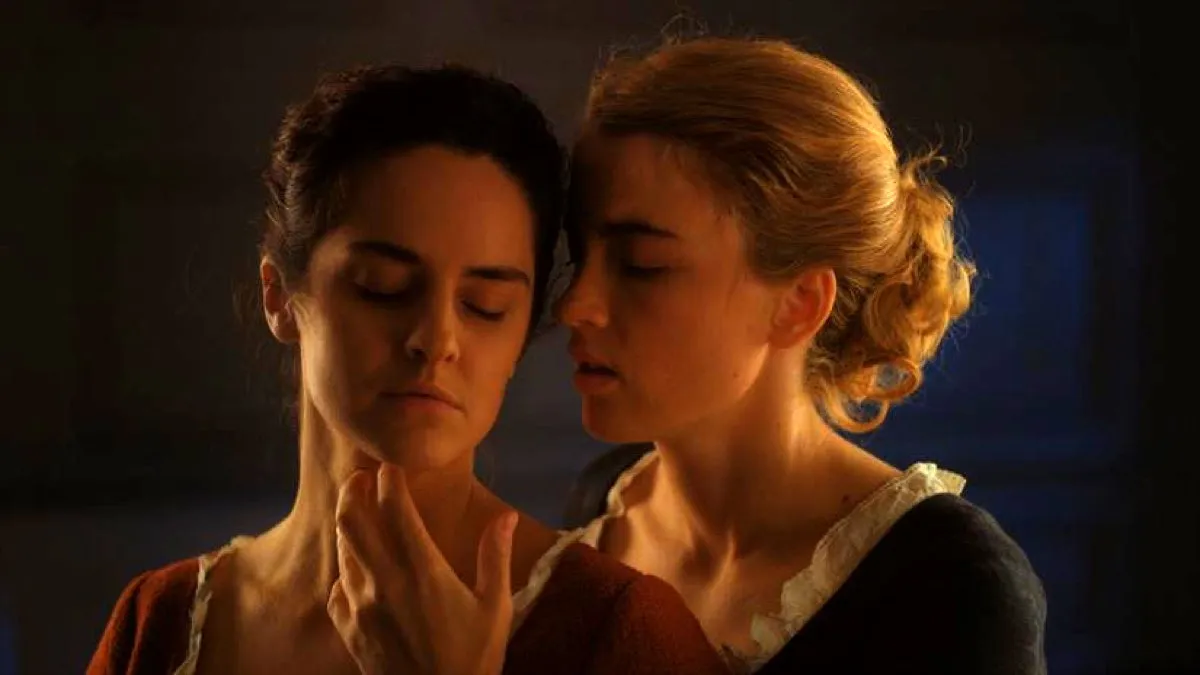I am of the generation of LGBTQ youth that is comfortable calling myself queer as well as bisexual. For a lot of us, the broadness of the term delivers shorthand communication of who we are, especially if we have multiple terms under multiple parts of the queer umbrella. At the same time, that does not mean we need to force everything into that term and ignore the labels that people use for themselves. That is why it is important to call Céline Sciamma’s Portrait of a Lady on Fire a lesbian movie.
Marianne and Héloïse’s star-crossed love story in Portrait of a Lady on Fire is beautiful and weighty in a way I haven’t felt since I watched Barry Jenkin’s Moonlight. The sense of emotional intimacy, the focus on touch, the longing looks, and painful expressions in the eyes was incredible to watch and every moment of it was glorious.
Céline Sciamma is a lesbian herself, as is Adèle Haenel (Héloïse), and during interviews, Sciamma has talked about the male gaze and how often it has turned onto lesbians and erased their place in womanhood:
“These stories are really dangerous for patriarchy. That’s why the male gaze is obsessed with representing lesbians, for instance. It’s a way to control it. Our stories are powerful because they are dangerous. We are dangerous. So it’s a very good strategy to despise us — to undermine us — because it’s giving us less leverage for a very powerful political dynamic.”
I can understand the idea of thinking that maybe Marianne could be read as bisexual because she mentions in the film had gotten an abortion, which could indicate having a male partner at some point, but I think that’s a very limiting idea. There are lesbians who have had male partners before realizing they were not heterosexual. Especially in the time, the film takes place in, I could totally see Marianne trying to “correct” her desire for women by taking a male partner.
There is nothing limiting, in my opinion, by calling this a lesbian film unless you exclude trans women and nonbinary people from calling themselves lesbians, which is already telling on yourself. As a bisexual woman, I saw myself in the love between these two women. It reminded me of the first time falling in love with a woman and being overwhelmed by the new emotions and knowing that no matter what happened next, you’d never forget that feeling.
I am pro-queer, but I also believe in listening to LGBTQ people when they are expressing who they are. I have yet to see Sciamma say anything exclusionary, only being specific in who these women are. Two lesbian women who got to be perfectly, deeply, and joyfully in love for a short period of time, that stayed with them for the rest of their lives. Regardless of who came after.
Want more stories like this? Become a subscriber and support the site!
—The Mary Sue has a strict comment policy that forbids, but is not limited to, personal insults toward anyone, hate speech, and trolling.—










Published: Mar 11, 2020 12:47 pm